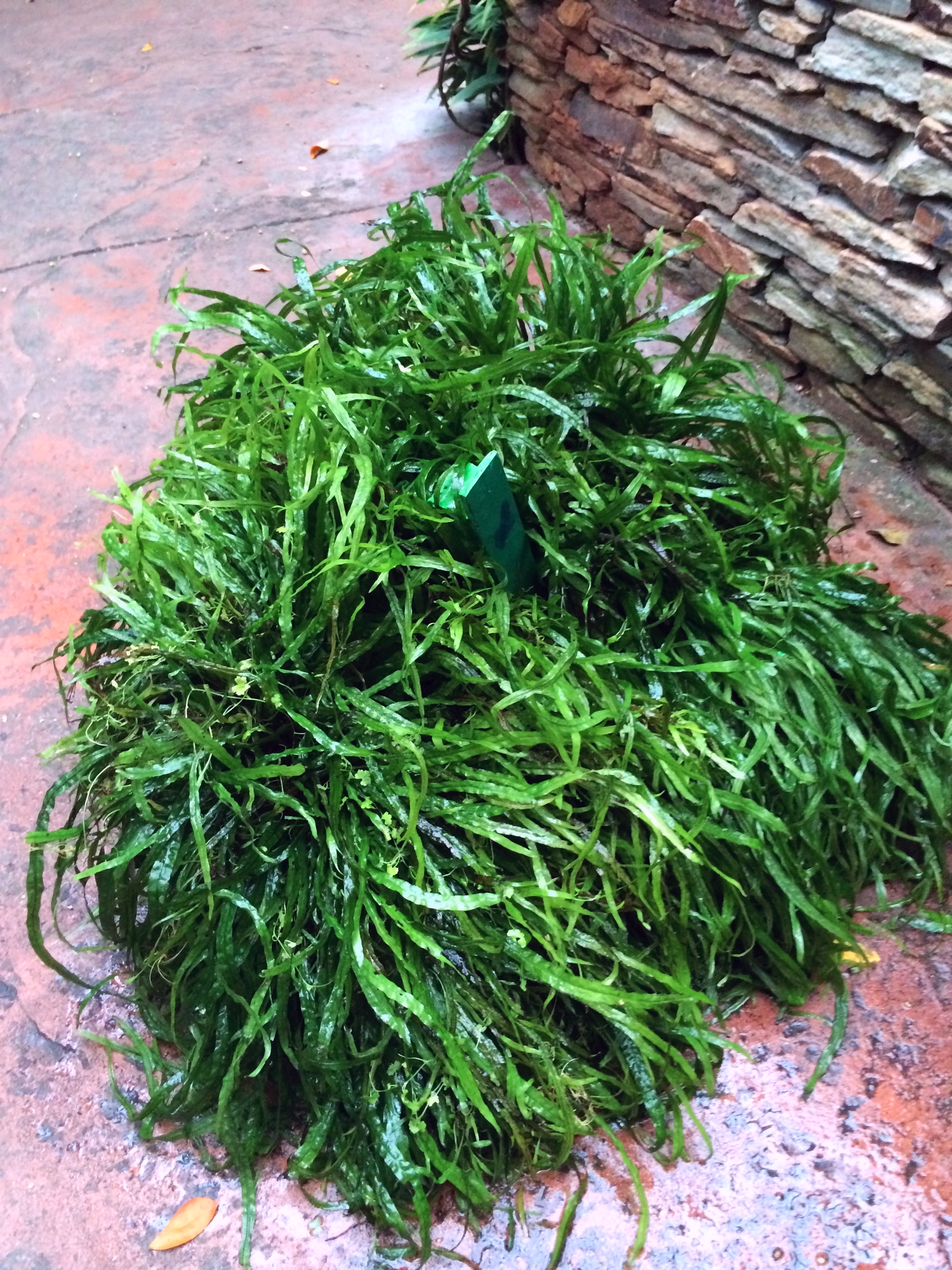








5000 Gallon conservatory part 4: Planted Pond
After the weeks of planning, deep cleaning and plumbing we were finally ready for the day of propagating the live plants. Planting is always the last major step for a display since the cleaning, hardscape design, and filtration all needed to be completed prior, in order to sustain the living plants. The planting itself needed to be coordinated and completed within a day since the pond was to be planted while it was still emptied of water and then filled after. Most people asked me "How would you plant the pond? Would you swim around?" You can, but its not ideal. I decided to propagate the plants while empty, especially considering the large scale of this project and the amount of plants to be planted. Going in and out of the pond would be a pain.
Prepping the plants the day of was not an easy task. A few people preparing the plants, trimming dead leaves and dead roots. Another person tasked with a sprayer to keep all the plants hydrated. also one to organize the plants for those either propagating plants in soil or on the wood and stone.









Now on to the green thumb side of things. While all other critical tasks were being performed, every individual plant needed to be propagated. There are several factors to consider when designing the layout of an aquascape with respect to the flora. Plants grow in different ways such as shape and size whether thats in height, length, or width. This would separate plants into three categories, taller background plants, mid-ground and shorter foreground plants. There are also variations on how certain plants are maintained and how they grow and develop as you trim them. In a few months time, a group of plants may drastically change in shape and behavior. Plants will also vary in lighting requirements therefore planning ahead and identifying which parts of the pond were generally shaded or well lit.
Planning ahead with maintenance in mind, of course I wanted to try to make my job easier once this was filled with water, I needed to consider how to best position not only the hardscape but also the type of plant whether that be a fast grower or a slow grower. Half of the plants were planted in the substrate and the other were attached to the wood and stone. With about 40 to 50 different plant species and hundreds of individual plants, it definitely wasn't a small task. After about 3 hours of planting, the back was hurting and the neck was sore. The humidity was starting to get to me. I was growing tired and my patience was tested. I found myself just grabbing plants quickly and planting them anywhere I found space. Finally after 6 hours, the planting process was completed. The pond was filled with water and the main pump was turned on and the filtration system took off!









Just after a few weeks of operation, the water remained crystal clear and the plants were already showing signs of growth. The scary thing with such a large project is that I wasn't sure how all the plants would react to the new environment. Sometimes you can set up a new system and it would in a sense shock the plants, and most of them could start melting away or some would never "take root". Usually this would be caused by pH or temperature, but in this case I guess it turned out to be the perfect environment so pretty much all of the plants that were selected. It would have been disastrous if we had lost all of those plants, money would have gone down the drain, if you know what I mean.
The clear white water of the pond eventually transformed into a body of water with a nice yellow to orange tint. Dead leaves from the surrounding forest are constantly making their way to the waters and steeping. Tannins from the leaves eventually tint the water. This is of no issue for now, the decomposition of the detritus material contribute some natural nutrients to the pond, and in turn also create a more suitable environment for any living inhabitants of the pond. From the pictures, you can see the different types of plants, from Ferns and Anubias to various Cryptocorynes and Swords. Placement of the different plants were strategically planned so that in a few months time the various types of plants the display could all be visible form one point or another.












After just about 3 months from the planting of the pond, the growth of the plants exploded and filled out the pond faster than I had imagined. Even with the majority of the plants selected being "slow growers" I definitely didn't see it coming. This unfortunately requires a little more maintenance with trimming and pruning the plants, but on the up side, the pond uptakes nutrients steadily and keeps algae to a minimum. With this being a system drawing ambient light, there is no control of light to the pond to control algae growth if needed. Usually with the use of a timer, the lights can be turned off, but now the pond will grow with natural sunlight of the seasons.
Due to the pond submitting to the ambient light and temperatures of the environment, it will be interesting to keep track of a pond that endures the different "seasons". The pond won't experience storms or droughts, but for the most part it will adapt to the sun as daylight will change throughout the year. After months and months of planning, finally the pond is "complete" but by no means is it going to stay the same as it is a living and dynamic system that will continue to run its course. Fish will be added as well, schools of smaller fish to be exact. Several hundred little fish will set the pond to life. Maintenance to commence!
